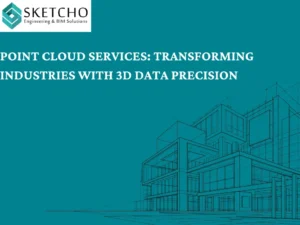Because innovative technologies are finding new ways to design and construct, the industry of construction seems pretty exciting. One of the noticeable developments has to be BIM, or Building Information Modeling. Ever wondered how skyscrapers, intricate bridges, sprawling residential complexes plan and execute seamlessly? Well, BIM-Building Information Modeling-is the answer!
What is BIM Building Information Modeling?
BIM is the digital representation of physical and functional characteristics of a facility. It’s basically a shared knowledge resource that is intended to be used by teams to make informed decisions concerning a building’s entire lifecycle, right from the very earliest conceptual stages to demolition. According to the National Institute of Building Sciences, it is not uncommon for BIM to reduce project costs up to 20%.
Benefits of BIM Building Information Modeling
Better Collaboration
First and foremost, the most overwhelming advantages of BIM are that it generally enhances collaboration among the stakeholders in the modeled building. Traditionally, architects, engineers, contractors, and clients had a tendency to work in silos, hence developing instances of miscommunication and errors. The core nature of BIM makes everyone work on one unified model. This fosters a collaborative approach, not just in teamwork but also in problem-solving.
Efficiency and Accuracy
Besides, BIM-Building Information Modeling also increases the efficiency and accuracy by a great extent. How? The detailed 3D models allow for proper planning, leaving very little scope for further mistakes. For instance, in a study, McGraw Hill Construction reported that 75% of contractors realized a positive return on investment with the use of BIM. This is majorly because BIM locates the errors in the earliest design stage, hence saving time and money.
Cost Savings
Moreover, BIM saves money substantially. It will better the way project teams work within budgets and not be subjected to unplanned expenses. For instance, in the report taken from the U.S. General Services Administration, it is said that usage in facility management can reduce operational costs up to 35%. Isn’t this impressive?
Better Project Visualization
BIM development enhances project visualization. The 3D models are not only pleasingly arresting but highly informative as well. For example, clients would know exactly what to expect in the finished project, and this helps make better choices. This also helps get necessary approvals from stakeholders and regulatory bodies.
Sustainability
Other key benefits include those related to sustainability: BIM has facilitated the use of sustainable practices in design and construction. With BIM, project teams have the ability to optimize energy efficiency, reduce waste, and ensure that only ‘green’ materials are used. According to the World Green Building Council, up to 30% savings in energy use may be realized through the use of BIM on buildings.
BIM - Building Information Modeling Applications
Architecture
BIM is revolutionizing how buildings are being designed in the field of architecture. This indeed allows the architects to create more precise and detailed designs, explore options for various designs, and simulate the performance a building will have before its actual construction. This will eventually result not only in high quality of the design but also in increasing client satisfaction.
Engineering
BIM provides a really robust platform on which engineers can collaborate not only with the architect but also with other stakeholders. In such a process, it assists in the detailed design of structural, mechanical, electrical, and plumbing systems. This integrated approach ensures that all building elements work in harmony with each other; this will reduce the likelihood of conflict during construction.
Construction
BIM is a very important tool in the management of the project during construction. It aids in the scheduling, cost estimation and resource allocation of the project. It will help provide a clearly defined roadmap so that the project is completed on time and within the prescribed budget. It also provides real-time updates to enable the project teams to respond promptly to changes and other issues.
Facility Management
BIM or Building Information Modeling still has something to offer at the post-construction stage. The BIM data can be used by the facility managers during maintenance, renovation as well as future expansion. Detailed information in the BIM model will significantly increase the effectiveness of the facility operation and will contribute to the reduction of long-term costs.
Operational Challenges and Future of BIM
Barriers to Adoption
The reason for this can be attributed to the several challenges that come along with BIM Building Information Modeling implementation. First among them is the cost it entails in implementation. For the small and medium-sized enterprises, it might be a burden to afford the required software and training to operate it. In any case, all things being equal, the costs are expected to go down when the technology becomes more diffusion-based
Technical Challenges
There are also technical challenges. For instance, interoperability among different BIM software and tools is difficult to achieve
Future of BIM
The future of BIM, or Building Information Modeling, indeed looks bright. In the instance of technological evolution, it is at a point where, with inclusion like artificial intelligence and virtual reality, for example, the strength of BIM is bound to increase.





